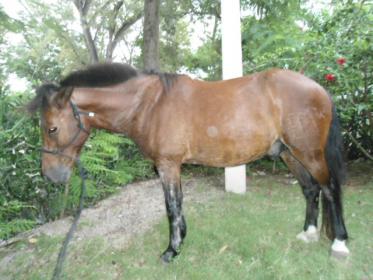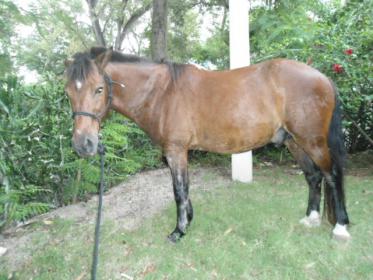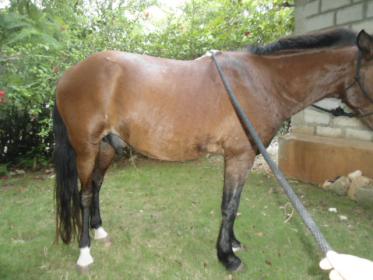OMG, how horrible that someone would just take your horse! I’ve never been summoned before, HiH, makes me feel special, although I don’t know that I have any specific good advice for you.
I will ask, though, what do you mean by “pivot” on his hind legs? Do you mean keep a hind foot stationary and move the front legs? Or do you mean keep a front leg stationary and move the hind?
You’ve said what he can’t do and what’s hard for him and a little bit about what he can do (walk in straight lines), but what is it you want him to do? Develop proper musculature to support the joints? Have good basic ground manners? Be soft in the bridle?
There are things you can do with him that would be less stressful than other things, for sure.
One thing to help with the brace is to separate his body into five parts and see what parts give and what parts resist and work from there (doing this from the ground and first and then when you’ve mastered it, try it from the saddle). Think of it as horsey yoga, not cowboy-type work. So, start at his head/poll. Can he gently flex side to side? No more than at the poll. Gently ask him to give from rein pressure on one side and then the other. Is it even on both sides? Is one side more difficult than the other? Can you develop a “flow” where you go easily from side to side?
When that checks out, move to the neck. Can he bend through the neck and bring his head around a little more to the side (and still stay centered, not tipping off-kilter)? Again, notice the difference in each side and see if you can work through the middle-point-stopping-resistance area.
When that checks out, move to the shoulders. Does he move his shoulders easily? For this you might stand in front of him in front of his head and ask him to follow the feel of your lead rope. If you bring your hand out to the side, does he follow it and shift his weight in preparation to move, or does he just look at you like you’re crazy? Repeat on each side. See if you can get him to shift his weight or take a step, or just be ready for whatever you might ask of him.
Move to the ribcage. Does he move over from pressure? How much pressure does it take? Do you have to lean in to him to get him to release, can you do it with just a finger, can you do it with just a touch, can you do it with a look and your body movement?
Go to the haunches. How much pressure does it take to get him to move over, stepping under with the inside hind leg (not behind the other leg, over and in front of)? Is it the same on both sides? Which side carries more resistance and how does it present itself? Can you move him with the hand, with a finger, with just your body positioning, with a look?
Stand at the near side of his body. Run the lead along the offside of his body and around the rump. Give a gentle pull so that his head will flex toward the offside and he will bend through the head, neck, ribcage, and release and step under with that hind leg. If you do this, make sure that your lead rope is plenty long enough so that there’s room between his butt and your body so that you don’t get kicked. Actually, make sure he’s good with ropes around his butt before you try this so that you don’t get kicked! I like this exercise and find it helps for suppling.
You don’t have to do a bunch of small circles over and over again, you just have to make sure the exercises you do are done well so that you don’t put additional stress on his body.
Another exercise I like I got from Bryan Neubert. If you don’t have an area where you can circle, then you can do it just as shallow serpentines. You’ll be walking backward and he’ll be walking toward you. This builds on the earlier “move the shoulders” exercise, so make sure you’ve got that one down first. Walk backward with him walking toward you (make sure he minds your space and doesn’t crowd you - if he does, that’s another lesson). Offer him a feel to follow by bringing your right hand out to the side - see if he follows it and moves in an arc around you. Walk straight a little bit, then see if he’ll follow the feel in the other direction, then straighten out. It is a bit hard to describe but basically you are doing a shallow serpentine. I use it for figure eight circles but if you don’t have room for that it might not work.
With horses who are injured or otherwise unable to physically work, I think the mental aspect of it is just as important. None of these exercises are physically demanding, but they do get to the brain of the horse and they give you an opportunity to assess movement and how the horse feels. You’ll be able to see if he takes a mis-step when moving the hind legs and how that might look or feel different from general “I don’t feel like it.” It might help you get a feel for his different body parts and what’s easy and what’s hard and how it changes from day to day. Taking it slow and easy and taking the pressure to perform off of him also allows you to treat it like PT vs. just exercises you have to go through because that’s “what you do” when doing ground work.
I have more ideas if these aren’t enough, but at least there are some basics for you to work with!



